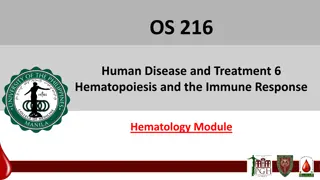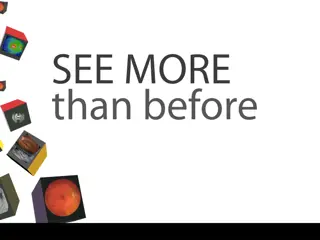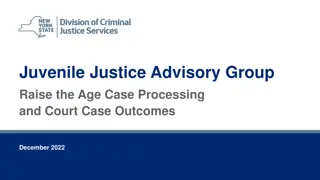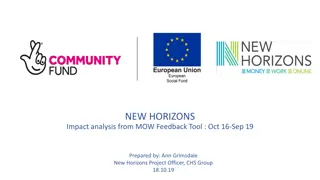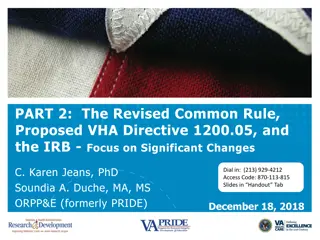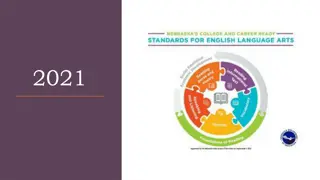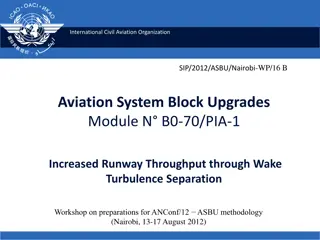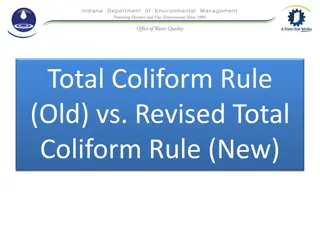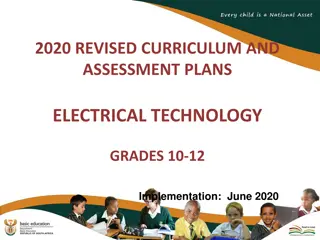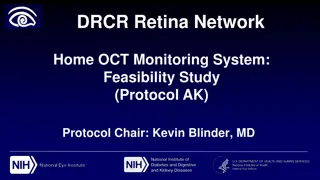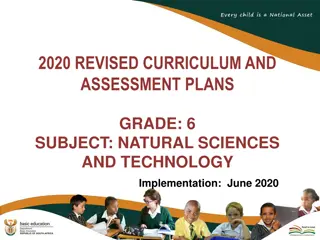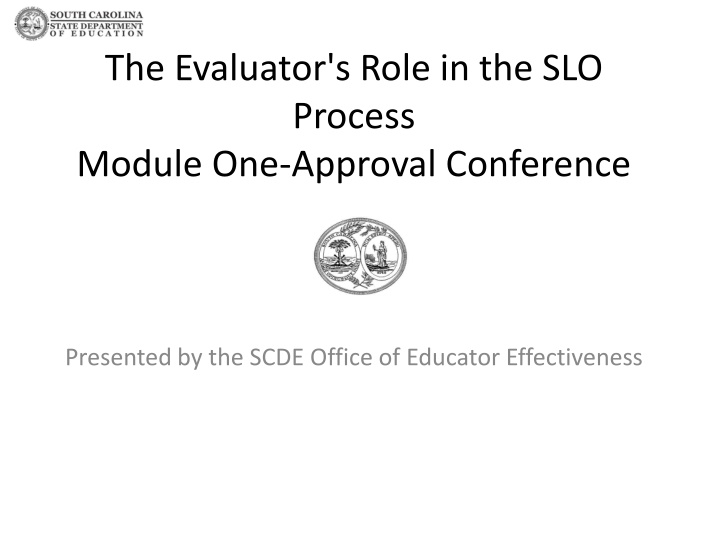
The Evaluator's Role in the SLO Process
Explore the importance of supporting the SLO process for teachers, benefits for principals, development of SLOs, and methods to ensure successful implementation in the education evaluation system. Learn about SLO components evaluation, teacher support, and resource identification.
Download Presentation

Please find below an Image/Link to download the presentation.
The content on the website is provided AS IS for your information and personal use only. It may not be sold, licensed, or shared on other websites without obtaining consent from the author. If you encounter any issues during the download, it is possible that the publisher has removed the file from their server.
You are allowed to download the files provided on this website for personal or commercial use, subject to the condition that they are used lawfully. All files are the property of their respective owners.
The content on the website is provided AS IS for your information and personal use only. It may not be sold, licensed, or shared on other websites without obtaining consent from the author.
E N D
Presentation Transcript
The Evaluator's Role in the SLO Process Module One-Approval Conference Presented by the SCDE Office of Educator Effectiveness
Connector How does supporting the SLO process with teachers benefit a principal? Take one minute to process independently Turn and talk to your neighbor to discuss your thoughts Be prepared to share out with the group
Welcome and Introductions
Group Norms Be present (physically and mentally) Please use electronic devices responsibly Ask questions when in doubt Honor the time schedule Participate actively
Key Topics Welcome and Introductions SLOs and Teacher Evaluation Assessment and Rigor Quality Review Tool Coaching Conversations & the Approval Conference Next Steps: Districts, Evaluators, Teachers
Overarching Objectives Develop an understanding of SLOs and their role in the Expanded ADEPT Support and Evaluation System Become proficient in evaluating SLO components to ensure successful implementation Identify methods to support teachers in the development and monitoring of SLOs Identify resources to facilitate the evaluation of SLOs at the school level
Expanded ADEPT ADEPT (2006) Expanded ADEPT (2015) Professional Practice-100% Observation and Artifacts Professional Practice Student Growth Measure District Choice (optional) Districts have flexibility to determine composition; however, to satisfy ESEA requirements: Multiple Measures- no one factor be more than 80% Student Growth Measures- significant portion- at least 20%
SLOs and Teacher Evaluation Student growth must be a significant portion of an educator s evaluation SLOs are a vehicle for collecting evidence of student growth Designed for use by teachers in grades and subjects that do not have a state-mandated, ESEA required assessment. (2015-2016 SLOs for all) SLOs can be combined with a teacher s VAM score to yield a student growth score
SLO Resources SLO Toolkit- http://ed.sc.gov/slo District Decision Checklist SLO Guidebook
Tic-Tac-Toe GOGO Activity Directions: 1. Find the SLO Tic-Tac-Toe sheet in your participant packet. 2. Select a row, column, or diagonal of questions/tasks to answer/respond. 3. Use the SLO Guidebook to locate the responses to the tasks in the boxes. 4. When you ve completed your three, get up and visit with others to share and find answers to all the questions on the grid.
The SLO Process SLO Development Preliminary Conference- SLO Approval Summative Conference and Reflection Mid-Course Conference Final Review and Score
Product The Anatomy of a SLO Objective- The goal statement. Identifies content; focused enough that it is measurable. Rationale- Explains how growth targets and student population were determined. Baseline and Trend Data-Describes students baseline knowledge for learning and patterns in data. Growth Targets-Describes teacher s expectations for student growth at end of interval; tiered for all students. Student Population-Specific population targeted by the SLO; includes information about student learning. Content/Standards/Interval of Instruction- Specifies time period of instruction, and demonstrates content standard alignment. Assessment- Describes which assessment(s) and grading procedures will be used and why they are appropriate. Instructional Strategies- Describes research-based instructional strategies that will be used during interval. Progress Monitoring-Describes type and frequency of interim assessments to measure student progress. Teacher Professional Growth and Development (and Action Research): SC specific component.
Summative Scoring Table Exemplary In addition to meeting the standard Proficient Needs Improvement Unsatisfactory The work of the teacher results in acceptable, measurable progress based on established standards for a significant number of students. The teacher attains a high level of student achievement with all populations of learners. The work of the teacher results in student growth but does not meet the established standard and/or is not achieved with all populations taught by the teacher. The work of the teacher does not achieve acceptable student growth. Almost all students targeted growth, and many exceed their targets meet their A significant number of students meet or exceed their targets. A less than significant number of students meet or exceed their targets. Fewer than or exceed their targets. of students meet Beginning of the Year Targets: Performance Level: Performance Level: Performance Level: Performance Level: of of Meet/Exceed Exceed of Meet/Exceed of Meet/Exceed < of Meet/Exceed End of Year Performance: of of Meet/Exceed Exceed of Meet/Exceed of Meet/Exceed < of Meet/Exceed
Assessments Measure what students are expected to learn in a course over time Indicate the degree to which a teacher has impacted his or her students learning Must be pre-approved through preliminary conference
Best Practice: Use 2 3 assessment sources One assessment is unlikely to paint an adequate picture of student learning Yield more meaningful, valid, and reliable information
State Standardized Assessments District Standardized Assessments Common Assessments Teacher-Created Assessments
Valid Stretch Reliable Determining Assessment Strength Timely Comparable Rigorous
Qualities of Growth Targets Set to measure an increase between two points in time Are rigorous and attainable Informed by baseline and trend data Stretches ALL students
Examine the Data Pretests (course content) Scores from previous similar content Data collected over time Additional historical data
Types of Growth Targets Targeted Growth Targets Individual Growth Targets Tiered Growth Targets Appropriate for the class approach to SLOs, tiered growth targets include all students but at varying degrees of expected growth. Sub population(s) of students are the focus of the SLO goal. Appropriate for course approach as a second SLO when the first includes all students. Appropriate for use in class or course SLOs. All students have individualized growth targets based on previous performance and expectations.
Possible Contextual Factors Learning disabilities or conditions Behavioral conditions Student health and home conditions (i.e. transient or managing long-term health challenges) Note: It is important to consider Students past performance data The extent to which these factors may impact student growth What types of interventions or supports are in place and their effectiveness 27
Process for Setting Growth Targets What growth have students made in previous years? What is the minimum score at which students can be proficient ? Does the initial growth target allow students to make meaningful progress towards proficiency? Set Initial Growth Targets Are there contextual factors that are likely to affect students growth in positive or negative ways? Are these factors reflected in students previous growth or are they new? What growth have students with similar factors made in the past? Adjust Growth Targets Are these targets rigorous and attainable? Review Targets
Teacher Considerations for Setting Growth Targets How will teachers connect growth targets to instructional strategies? What instructional strategies will be used to ensure that lower-performing students do not fall further behind? What instructional strategies will be used to ensure that lower-performing students can make progress towards closing their achievement gap? What instructional strategies will be used to ensure that students consistently demonstrating proficiency continue to grow and develop advanced skills? What instructional strategies will be used to engage and challenge higher-performing students?
Teacher Considerations for Setting Growth Targets How will teachers monitor student progress? What kinds of formative assessments and informal formative data collection will teachers use? What kind of interim goals or benchmarks will teachers set (formally or informally) to ensure students are on-track?
Growth Target Example Pre-assessment Baseline Score Target Score on Post-assessment 41-60 70 or increase by 15 points, whichever is greater 61-70 80 or increase score by 15 points, whichever is greater 71-80 88 or increase score by 12 points, whichever is greater 81-90 95 or increase score by 8 points, whichever is greater, plus 85 or higher on final project 91-100 95 or increase score by 3 points (if possible), whichever is greater, plus 90 or higher on final project
How Could This Growth Target Be Improved? During the fall semester, 50 percent of the students will earn a National Physical Fitness award for their performance on the Physical Fitness test. This target is focused on proficiency, not growth. It also only requires 50 percent of students to meet the specified goal. Use baseline data to inform the target(s). Focus on growth, not proficiency. 32
How Could This Growth Target Be Improved? Students scoring 80 or lower on the science pre-assessment will increase their scores on the post-assessment by at least 10 points. Any students scoring 81 or higher on the science pre-assessment will maintain their scores. This target could be stronger. It does not sufficiently aim to bring students up to proficiency. Not all students are required to show growth. Consider revising targets if students are very low performing so that all low- performing students are growing towards proficiency. Revise targets for students scoring 81 or higher so that they must demonstrate growth 33
Please be ready to begin the next session in 10 minutes. Thank you!
The Quality Review Tool Evaluating a SLO for quality 3/21/2025
The Quality Review Tool The Learning Goal Assessment and Scoring Targets 3/21/2025
Ratings Acceptable Quality Appropriately identifies and thoroughly describes/explains Quality Needs Improvement Generally or broadly identifies Insufficient Quality Vague, unessential, confusing, insufficient 3/21/2025
The Quality Review Tool 3/21/2025
Quality Review Conference Form 3/21/2025
Case Study Activity Task: Use the Quality Review Rubric to evaluate the quality of the 2nd Grade SLO example. Be sure to rate the SLO in all three categories. Identify areas of strength and areas of potential growth in the SLO. Use the Quality Review Conference Form to record your findings. 3/21/2025
Supporting Development of High Quality SLOs COACHING CONVERSATIONS
Coaching Protocol Validate Stretch &Apply Clarify
SLO Approval Conference Video Count off 1-3. During the video capture language stems that demonstrate your assigned area of the protocol. #1) Validate: Affirms strength, or rationale #2) Clarify: Asks for greater detail, probes deeper #3) Stretch: Pushes the educator to think about next steps growth and development http://www.kaltura.com/index.php/extwidget/preview/p artner_id/1675021/uiconf_id/28500151/entry_id/1_yqiv bn6m/embed/auto?&flashvars[streamerType]=auto
Supporting and Evaluating the SLO A Case Study
Coaching Conversation Video Recap SLO Approval: Preliminary Conference
SLO Approval: Preliminary Conference SLO Development When? Prior to start of SLO interval. Who? Final approval is issued by the building principal. Preliminary Conference- SLO Approval Summative Conference and Reflection Mid-Course Conference Final Review and Score
Coaching Conversations Practice Using your Quality Review Rubric Conference Sheet, engage in a coaching conversations with a table partner Remember to use your coaching stems Validate Reverse Roles Stretch &Apply Clarify




